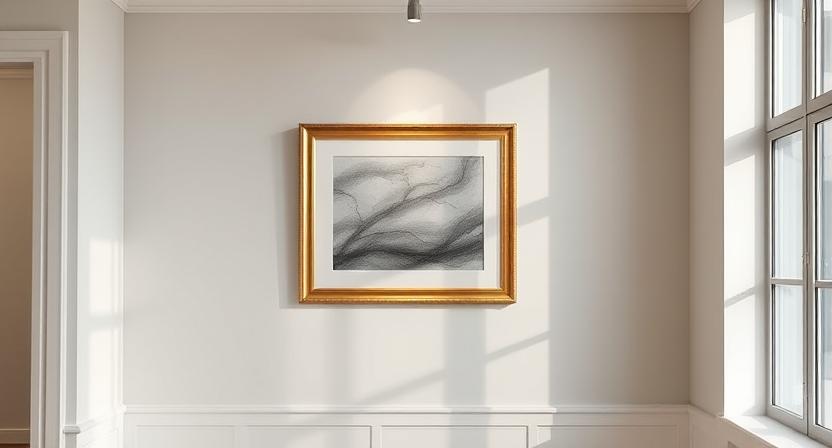Every piece of art tells a story, and choosing the right frame enhances that story while protecting the work from time and damage. A professional framing service helps you match materials, styles, and sizes to the content and tone of your artwork. Whether you're framing a bold abstract painting or a delicate pencil sketch, the right frame can elevate the piece and ensure it stands the test of time.
Understanding the Artwork
Before selecting a frame, it's essential to understand the character and requirements of the art itself. Size, color palette, medium, and subject matter all influence the final choice.
Medium and Material
Paintings on canvas, drawings on paper, textile art, and photographs each have different framing needs. A canvas might not require glazing, while a watercolor absolutely does to protect it from moisture and dust.
Style and Theme
The content and style of the art should harmonize with the frame. A rustic wooden frame might pair well with a pastoral scene, while a sleek metal frame could better complement a modern abstract piece.
Frame Materials and Their Aesthetic Impact
Frame materials affect both appearance and durability. A good framing service offers a variety of materials to suit each situation.
Wood
Wooden frames come in many finishes, from polished walnut to distressed barnwood. They're versatile and bring warmth to any artwork, making them ideal for portraits and traditional paintings.
Metal
Aluminum and steel frames offer a minimalist, industrial look. They're lightweight, modern, and often used for photography, posters, or contemporary works.
Composite
Engineered materials can mimic wood or metal at a lower cost, offering design flexibility while maintaining decent durability for less valuable items or commercial displays.
Matting: More Than Just a Border
A mat isn't just decorative—it creates space between the artwork and the glass, preventing sticking, mildew, or warping. The color and width of the mat also impact how viewers engage with the piece.
Single vs. Double Matting
A single mat offers a clean, modern look, while a double mat adds depth and sophistication. Contrasting colors can draw attention to details within the artwork.
Color Matching
Mat colors should complement the art without overpowering it. Neutral tones work well for most pieces, but bolder choices can enhance specific features or convey mood.
Glazing: Protecting the Surface
The glazing—glass or acrylic—safeguards your art. Choosing the right type is essential for preserving its beauty and condition.
Standard Glass
Affordable and clear, standard glass works well in low-light, low-risk settings. However, it doesn’t filter UV rays and can break easily.
UV-Protective Glass
This glass filters out ultraviolet light, preventing color fading and deterioration. It's ideal for valuable or light-sensitive artwork.
Acrylic
Lighter and shatter-resistant, acrylic is a great option for large pieces or those hung in high-traffic areas. It also offers UV protection in higher-grade forms.
Matching Frame to Room Decor
A frame should not only suit the art but also blend with its environment. A professional framing service helps find this balance, ensuring the frame enhances both the room and the artwork.
Color Coordination
If the frame clashes with the wall color or furnishings, it may distract from the art. Consider choosing a frame that either blends in or offers subtle contrast.
Room Lighting
Glazing choice should reflect room lighting. In bright rooms, non-glare or UV-protective glazing is crucial. For dim settings, clearer glass may allow better visibility.
Display Style
Whether the art is the focal point of the room or part of a gallery wall affects how bold or subtle the frame should be.
Consideration for Display Location
Different environments place different demands on frames. Humidity, sunlight, and physical activity can impact artwork preservation.
Living Rooms and Hallways
Frames in high-traffic areas should be sturdy and secure, ideally with shatterproof glazing.
Kitchens and Bathrooms
Avoid displaying original artwork in humid areas. If necessary, choose acrylic glazing and sealed backing to resist moisture.
Offices and Commercial Spaces
Durability is key in these settings. Consider low-maintenance materials like metal or laminate and protective glazing.
Customization Options
Custom framing allows you to fully tailor the frame to your piece and space. From ornate carved wood to simple minimalist black, the choices are endless.
Personalized Finishes
You can opt for painted, stained, or textured finishes to achieve the exact aesthetic you desire.
Size Adjustments
Custom sizing ensures a perfect fit, particularly for non-standard dimensions or oddly shaped items.
Cost vs. Value
While ready-made frames may cost less, they often lack protective features and design flexibility. A framing service like Art Plus offers expert advice and access to archival materials, making it a wise investment for valuable pieces.
Long-Term Protection
Spending more upfront for conservation-grade materials can save you the cost of restoration or replacement down the line.
Artistic Integrity
The right frame enhances—not distracts from—your art. It allows viewers to fully appreciate the composition, color, and texture.
Conclusion
Choosing the right frame is as much about protection as it is about presentation. A professional framing service ensures your artwork is housed in a structure that enhances its beauty while safeguarding its future. From the choice of materials and matting to the selection of glazing and style, each element plays a role in how the final piece is perceived. The effort you invest in framing today will continue to benefit your art and its viewers for years to come.





Comments